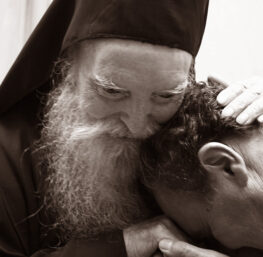First Things | by W. Bradford Wilcox | 3/8/2010
Sociologist Christian Smith began his ambitious, multivolume effort to plumb the religious lives of Americans across the life course in his 2005 with Soul Searching: The Religious and Spiritual Lives of American Teenagers. In that book—aimed at an audience that the author hoped would include general readers as well as clergy and scholars—Smith painted an incisive portrait of religion among America’s adolescents. Especially insightful was the way Smith explained why the more sectarian religious traditions in the United States, such as evangelical Protestantism and Mormonism, were achieving greater success than more churchly traditions such as mainline Protestantism and Roman Catholicism in transmitting their faiths to the next generation. Also notable was the way Smith explained how the guiding religious ethos of American teenagers—what he aptly termed “Moralistic Therapeutic Deism”—seemed so suited for our culture.
Smith contended, in his 2005 book, that most religious teens in the U.S. had very little appreciation or regard for the theological and doctrinal particulars of their own religious traditions but did believe that God exists, loves them, wants them to follow the Golden Rule, and comforts them in the midst of the emotional ups and downs of adolescence. Moreover, Smith argued, most teens, including teens who were regular churchgoers, believed that all religious traditions are functionally equivalent, and that they provide spiritual succor, moral guidance, and emotional support in about equal measures. This, then, is Moralistic Therapeutic Deism; and, as Smith pointed out, it has proved enormously useful to American adolescents because it allows them to navigate the increasingly pluralistic milieu of the United States without stepping on the religious sensitivities of their peers or violating the tolerant conventions of the larger society.
In his latest book, Souls in Transition: The Religious & Spiritual Lives of Emerging Adults, Smith revisits the spiritual state of his respondents as young adults aged 18 to 23, at a life stage that is now called “emerging adulthood” in the social sciences. In a sense, not much has changed among the emerging adults Smith discusses in this new book. Young adults from more sectarian religious communities still do comparatively better when it comes to outcomes such as church attendance and orthodox religious belief, and most emerging adults still seem to subscribe to a form of Moralistic Therapeutic Deism.
Smith notes, however, that emerging adults are less religious than they were as adolescents. Only 15 percent attend church on a weekly basis, and 26 percent indicate they have no religion. Part of the story here is that young adults often drift away from formal religious practice after they move out of their family homes and return to regular churchgoing only when they marry and have children. For much of recent American history, young adulthood has been the religious nadir of the life course for most Americans.
But the religious disconnect—institutional, moral, and theological— among contemporary emerging adults that Smith describes in Souls in Transition seems more profound than the typical pattern of temporary religious disengagement that has marked the lives of young adults over the last century or so. A majority of today’s emerging adults do not regularly darken the door of a church; are largely indifferent or, in some cases, hostile to religion; and are similarly indifferent or hostile to religious teachings about the good life—especially as they relate to sex, drinking, and drugs. Furthermore, a majority of the 30 percent of this cohort of emerging adults who are regular churchgoers are “selective adherents” who “believe and perform certain aspects of their religious traditions but neglect and ignore others.” By Smith’s reckoning, only 15 percent of emerging adults count as “committed traditionalists” who are committed and consistent believers. When it comes to religion, this seems to be a generation of lukewarm believers.
This should come as little surprise, however, when we step back from the religious lives of today’s emerging adults and look at the larger social milieu in which they find themselves. Their connections to education and work tend to be fragile and unstable. They live much of their lives in an isolated, electronically mediated world in which iPods, personal computers, and cell phones link them to their preferred music, movies, and friends and not much else. They are largely indifferent to the great causes of the right and the left. And, most importantly, for most of these emerging adults, marriage is not on the horizon. It is little wonder, therefore, that the members of this lukewarm generation are largely disconnected from American religion, given that they are also disconnected from stable long-term employment, civil society, and family life.
What is to be done? Smith does not provide any easy answers to this question in Souls in Transition. He does, however, offer some excellent advice to parents and religious leaders about how they can steer today’s children away from the lukewarm lives being lived by contemporary emerging adults. According to Smith’s analyses, children are more likely to end up as committed and consistent young-adult believers if their parents integrate religious faith into daily family life; if children are exposed to engaging adult believers in their churches; if they have good religious friends; if they live chaste lives; and, interestingly, if they have to suffer for their faith. Smith notes that adolescents who were “made fun of by peers for [their] religious faith” were more likely to end up as serious believers as young adults. In other words, family, friends, sex, and suffering will have a lot to do with how successful the next generation of young people will be in avoiding the lukewarm path being trod by many of today’s emerging adults.
HT: FirstThings



